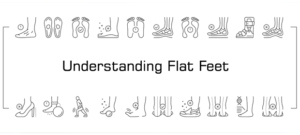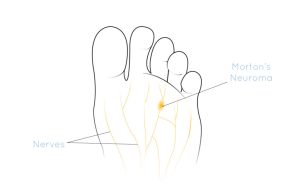Heel Pain
What is heel pain?
Heel pain is usually felt either under the heel or just behind it. Heel pain can range from mild to disabling depending on the cause.
Causes of heel pain:
Plantar fasciitis is the most common cause of heel pain. This is where the plantar fascia, the thick band of tissue that runs across the bottoms of your foot and connects your heel to your toes, becomes inflamed.
However, there are many other causes of heel pain and a specialist at Podogo can identify the correct diagnosis and underlying cause. Other heell pain causes may include:
- Flat feet
- Injury/trauma
- High Arched (Pes Cavus) Feet
- Tight Calves
- Plantar Fascia Tear
- Bursitis
- Heel bone fracture
- Plantar Fasciitis
- Nerve Entrapments
- Back Pain
- Obesity
Symptoms of heel pain:
This pain typically arises first thing in the morning when you get out of bed or after resting on a chair. The most common area of heel pain is on the inner side of the heel and can be described as a sharp, burning and throbbing pain. It typically gets better after the morning and returns towards the end of the day.
Diagnosing heel pain:
Our heel pain specialists will perform a thorough examination which would include foot posture analysis and gait analysis if required.
We use X-rays, Ultrasound and MRI scans as required to ensure that a correct diagnosis of the heel pain and underlying conditions is achieved before any treatment is initiated.
The key is to identify inflammation or tear of fascia or local bursitis that could be the cause of the heel pain. We can also identify rare conditions or poor foot posture, leg length discrepancy or back problems that can cause a heel complaint.
Treatment for heel pain:
Following a thorough assessment, your specialist may advise on one ore a combination of the following treatments:
- Orthotics
- Physiotherapy
- Shockwave therapy
- Steroid guided injection
- PRP injection
- Surgery, such as a plantar fascia release
Frequently asked questions
You should be concerned about any heel pain if it persists for more than a few days. It may not be anything to worry about but if you see a podiatrist they can take a look. Early treatment is usually better for you.
It depends on the type of heel pain and what is causing it. Common treatments can include using a walking boot with crutches, therapeutic injections, custom orthotics for your shoes, and shockwave therapy.
The best exercises include stretching the plantar fascia and the achilles tendon. You can stretch the fascia by pulling your toes back and holding it. The achilles tendon stretches can be done by slowly dropping your heels off a step. You generally hold the stretch for 30 seconds and repeat 3 times every day.
Related Blogs
Thoughts and advice on foot health care from the Podogo team.


















































